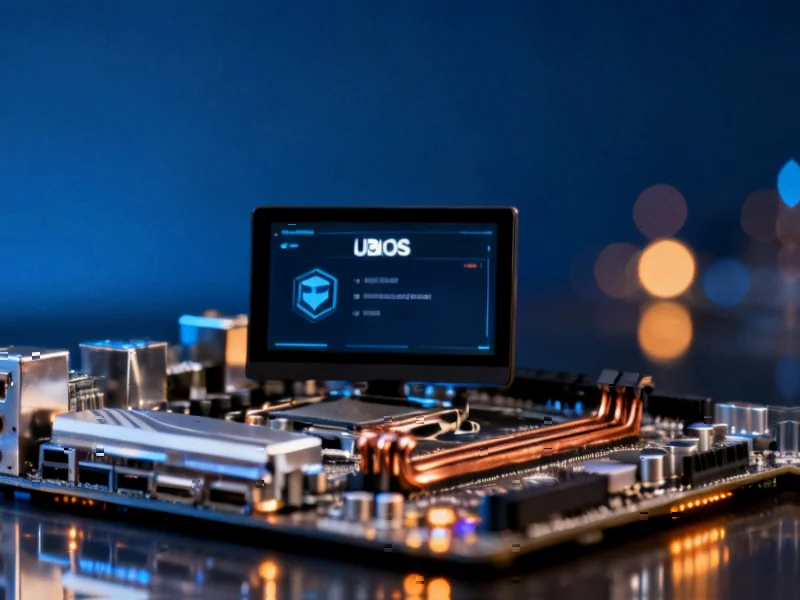New Firmware Standard Emerges
China has reportedly launched its first completely independent firmware standard called UBIOS (Unified Basic Input Output System), according to industry reports. Sources indicate this represents a significant milestone in China’s efforts to establish technological independence from foreign-controlled standards that have dominated computing infrastructure for decades.
Table of Contents
Breaking from UEFI Dependence
Analysts suggest the new standard addresses China’s historical reliance on UEFI (Unified Extensible Firmware Interface), which evolved from legacy BIOS under the leadership of Intel and Microsoft. The report states that UEFI has maintained dominance across x86 platforms and expanded to ARM servers, PCs, and RISC-V ecosystems, but has shown limitations for modern computing needs.
According to the Global Computing Consortium, UBIOS introduces a fully homegrown firmware architecture specifically designed to support heterogeneous systems. The official group standard identification code is documented as T/GCC 3007-2025, with the framework reportedly laying the foundation for a truly independent firmware ecosystem.
Technical Advantages and Development
The drafting committee for the UBIOS standard included 13 leading Chinese technology enterprises and research bodies, including China Electronics Standardization Institute, Huawei Technologies, and Nanjing BAI AO, according to consortium documents. Technical analysts suggest UEFI’s foundation remains deeply tied to Intel and Microsoft frameworks, with device discovery logic and OS loading interfaces depending on x86 processor architecture and ACPI system tables.
Sources indicate that while ARM, RISC-V, and China’s LoongArch architectures have been added to UEFI, the integration has been described as partial and somewhat awkward. In contrast, UBIOS is reportedly built from scratch as a new framework specializing in several key areas:, according to industry news
- Native heterogeneous computing support for diverse processor architectures
- Distributed architecture capabilities for modern computing environments
- Unified hardware management across different platforms
- Full scalability designed for future chip designs
Strategic Implications
Industry observers suggest UBIOS represents a strategic step toward full autonomy in China’s computer infrastructure and ecosystems. The report states that dependency on foreign-controlled firmware standards had been seen as a bottleneck in China’s computing authority, particularly given UEFI’s limitations with bloated code and inefficiency for heterogeneous computing.
According to analysts, this development aligns with China’s consistent efforts to achieve independence from foreign technology licenses. The new standard reportedly addresses both immediate technical needs and long-term strategic goals in the global technology landscape.
For those seeking additional technical context, background information about UEFI architecture and heterogeneous computing principles is available through technical resources.
Related Articles You May Find Interesting
- Worldpay and Affirm Expand Partnership to Bring BNPL Options to SaaS Platforms
- Egypt Advances Tsunami Early Warning System with Seismic and Infrasound Technolo
- UK Tribunal Rules Apple’s App Store Fees Anti-Competitive in £1.5 Billion Class
- US Government Explores Equity Stakes in Quantum Computing Companies Through CHIP
- Apple Faces £1.5 Billion UK Antitrust Ruling Over App Store Pricing Practices
References
- https://news.mydrivers.com/1/1081/1081504.htm
- https://profile.google.com/cp/Cg0vZy8xMWM3NDB2MmIyGgA
- http://en.wikipedia.org/wiki/UEFI
- http://en.wikipedia.org/wiki/Firmware
- http://en.wikipedia.org/wiki/GNU_Compiler_Collection
- http://en.wikipedia.org/wiki/China
- http://en.wikipedia.org/wiki/Heterogeneous_computing
This article aggregates information from publicly available sources. All trademarks and copyrights belong to their respective owners.
Note: Featured image is for illustrative purposes only and does not represent any specific product, service, or entity mentioned in this article.



